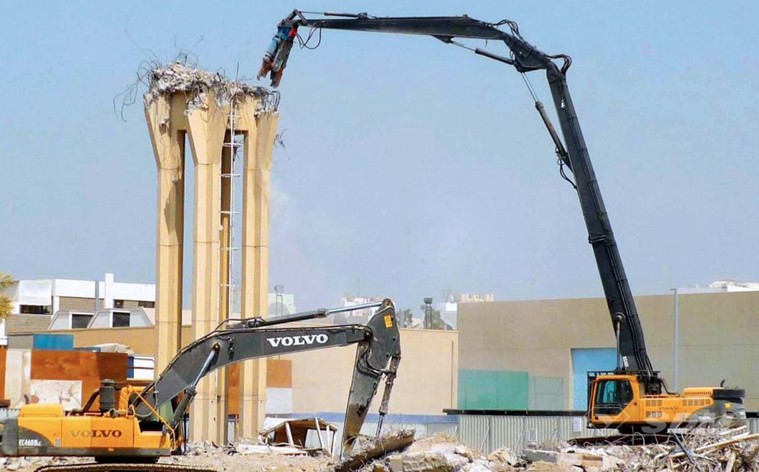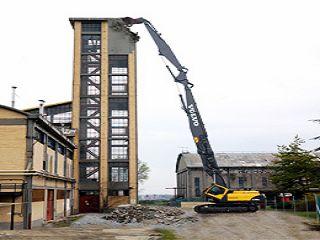 HuiTong
HuiTong  2025-06-13
2025-06-13
The boom action of the demolition boom excavator is one of the most frequently used actions in the daily construction process. If the boom has problems such as slow lifting and weakening, it basically declares that it needs to stop for repairs.
Today, I would like to share with you how to analyze, judge and solve the problem of slow and weak boom lifting.

1. Fault diagnosis
First of all, everyone must first make sure that if the boom is only lifted slowly and weakly, the bucket flips, and other actions are normal, this means that the working pump and the total safety valve are working normally and the pressure provided to the entire system is sufficient.
At the same time, it also shows that the pipeline and oil filter at the oil inlet end of the pump, as well as the amount and quality of the oil in the oil tank, are no problem. At this time, you only need to check the boom slide valve, boom cylinder, and boom part of the boom part of the boom excavator. Seal ring.
a. Check the blockage of the oil circuit
First remove the oil pipe, remove the boom slide valve body, valve stem and related parts of the demolition boom excavator for cleaning, clean the oil passage and blow dry with compressed air.
b. Check oil circuit leakage
Leaks in hydraulic systems are generally caused after a period of use, and are mostly caused by seal failure, damage, extrusion, or strain on the sealing surface.
There are many reasons for seal damage, such as oil contamination, improper sealing surface roughness, unqualified sealing grooves, loose pipe joints, increased clearance between mating parts, excessive oil temperature, deterioration of the seal ring, or poor assembly. Leakage is divided into internal leakage and external leakage. Usually, the fault is mainly caused by internal leakage.

c. Treatment of internal leakage failure
Internal leakage mainly occurs in the boom slide valve and cylinder. Internal leakage mainly occurs inside the valve body and cylinder, which is not easy to check. But we can use some auxiliary methods to determine the leakage.
d. Inspection of the boom cylinder
After the boom cylinder piston of the demolition boom excavator receives the bottom, remove the rodless cavity tubing so that the boom cylinder has a rod cavity to continue to be filled with oil. If there is a large amount of working oil leaking from the rodless cavity oil pipe port, it means that the hydraulic cylinder has internal leakage.
You can also fill the bucket with full load, lift it to the limit position, place the boom lever in the neutral position, turn off the engine, and observe the sinking speed of the boom.
Then, put the boom control lever of the demolition boom excavator in the up position. If the boom sinking speed is obviously accelerated at this time, it also shows that the internal leakage occurs in the hydraulic cylinder. If the sinking speed does not change significantly, the internal leakage is caused. Out of the boom slide valve.
e. Inspection of the boom spool valve
Leakage of the boom slide valve of the demolition boom excavator is mainly due to the large matching gap between the valve stem and the valve body, the damage of the pressure regulating spring, and the damage of the inner valve seal. Check the fit clearance between the valve stem and the valve body, check the pressure spring, and see if the seals in the valve body are damaged.
2. Troubleshooting
If the leak test result in the cylinder exceeds the specified value, you should disassemble it for further inspection. If the sealing ring is damaged, the cylinder wall is severely strained, or the boom valve is severely worn, it needs to be replaced in any of the three situations.